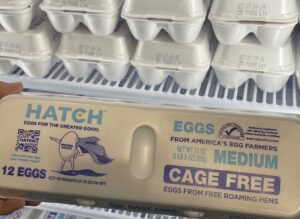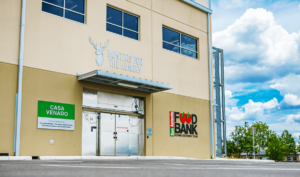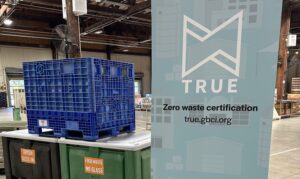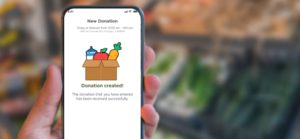Four days after Super Bowl Sunday, Ellen Bowen, the driving force behind the event’s food rescue efforts, was tired but energized.
Over the previous three days, she had directed a team of volunteers to collect about 35,000 pounds of food from the Hard Rock stadium in Miami. Leading up to the Super Bowl, volunteers had collected another 10,000 pounds of food from related events around town. The sheer volume — 45,000 pounds in total — dwarfed the 2,000 pounds typically rescued from an NFL football game at the stadium. Then there was the quality of the food: filet mignon, lobster tails, salmon, grilled ribs, beef tenderloin, charcuterie, and on and on.

“It was insane,” Bowen said.
Rescuing all of it, however, turned out to be a fairly straightforward job. As the Miami site director for Food Rescue US, Bowen relied on the company’s app — which lets anyone sign up to rescue food, donate it, or receive it — to manage the entire process. About 30 to 40 volunteers signed up for different shifts — working from 9 am to noon, or noon to 3 pm — over three days. “It was better organized than I thought it would be,” Bowen said.
Bowen’s role in the rescue effort was a supercharged version of the tasks she regularly performs in her volunteer position at Food Rescue US. Nearly every day, donors such as restaurants or caterers use the app to describe the food they have available to donate, when it will be available, and where exactly to pick it up. At that point, the donation shows up as an “open rescue” that volunteers can sign up for. In addition, Bowen gets an alert so she can match the donation with the best agency to receive it, either because of its location or current needs. “The app has been so amazing,” she said.
Apps like the one from Food Rescue US are making it downright simple to organize all the tasks related to food rescues, and for anyone anywhere to get involved. Dozens of food banks around the country, for example, have begun engaging volunteers in rescuing local food through Feeding America’s MealConnect app.

From the Super Bowl, the rescued food went to eight of the agencies Bowen regularly works with, which each feed from about 500 to 1,500 people a day. Volunteers delivered the food in refrigerated trucks — one rented by Food Rescue US and three others lent from one of the agencies — within half an hour of it being rescued. The most time-consuming part of the rescue process was transferring food from the caterer’s metal trays to disposable aluminum trays, then sealing, labeling and dating them. (Until the food was transferred, it was kept by the stadium’s caterers in large, walk-in refrigerators.)
Bowen, a transplant to Miami from Connecticut, did not have any food-rescue expertise before she started volunteering with Food Rescue US about 18 months ago. She started hearing first-hand about the epic amounts of food being wasted at restaurants and catered events through relationships she had built with chefs in her work as the founder and editor of MIAbites, an online guide to food and restaurants in Miami.
Her search for a solution led her to Conn.-based Food Rescue US, which she had known about when she lived in the state. Since becoming Food Rescue US’s point person in Miami a year and a half ago, the group has rescued more than 300,000 pounds of food throughout the city. Food Rescue US as a whole, which operates in about 25 locations across the country, has rescued more than 50 million pounds of food since it started in 2011.
Bowen came to Miami to enjoy retirement and says she had no idea what she was getting into when she agreed to be Food Rescue US’s rep in Miami. Now she describes food rescue as “the most rewarding thing I have ever done.” Of the Super Bowl effort, she noted, “It was actually fun.”









